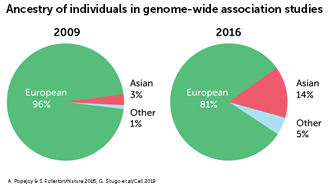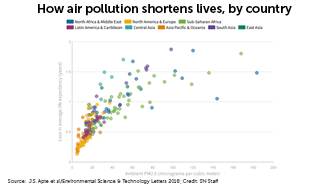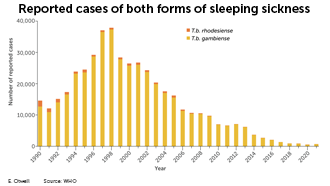Search Results

Genetic genome gaps cause blind spots
Scientists have had a rough draft of the human genome for some 20 years. They hoped to use it for precision medicine, treatments based on an individual’s DNA. But an understanding of the differences between different people’s DNA has been hampered by a lack of diversity in genetic studies known as genome-wide association studies.
All about STEM Comics, called Wild Things: An article type from Science News Explores
How can comic strips help teach experimental design of research studies? Use this lesson plan to learn about an article type called Wild Things that is published by Science News Explores in print and online. Wild Things use comic strips that tell the stories of research studies on animals’ biology and behavior. You can also access a lesson plan template that can be used with any Wild Things article.
Literacy Practice: 3-2-1 Strategy
Use this lesson plan and the provided template to have your students practice the 3-2-1 strategy. This literacy strategy is a quick way to check students’ understanding of a concept, reading or lesson. It helps them summarize and organize their thoughts by listing three responses to one prompt, two responses to another prompt and one response to a final prompt.
All about Technically Fiction: An article type from Science News Explores
Use this lesson plan to learn about an article type called Technically Fiction that is published by Science News Explores in print and online. Technically Fiction articles focus on a fictional phenomenon and explain whether it could be possible and the science it would take to make it a reality. You can also access a lesson plan template that can be used with any Technically Fiction article.
Literacy Practice: Concept Map
Use this lesson plan and the provided template to have your students practice creating concept maps for any article. This literacy strategy boosts critical thinking and reading retention by having students organize information and connect important ideas, concepts and terms.
Making use of nature’s designs
New discoveries about the natural world can inspire the design of human-made objects. In this activity, students will learn about how the overlapping feathers on birds’ wings prompted engineers to reimagine the design of aircraft wings. Students will explain how this is an example of bioinspired design and then create their own bioinspired designs.
The real Inside Out: Emotional responses in the body
Use this activity to have your students collect, graph and analyze anonymous class data about where different emotional responses are felt in their bodies. Then compare the class data with the findings of two recent studies, one collecting modern data and the other drawing on ancient data. To better understand why people experience emotions in different areas of the body, have students explore the physiological chains of emotional responses.

Air pollution and human health
In August of 2018, scientists published research showing how air pollution shaves off about a year on average from human life expectancy. In more polluted regions of Asia and Africa, lives are shortened by 1.5–2 years on average. Loss in life expectancy rises with increasing concentrations of fine particulate air pollution (PM2.5).
All about Explainers: An article type from Science News Explores
Use this lesson plan to learn about an article type called Explainers that is published by Science News Explores in print and online. You can also access a lesson plan template that can be used with any Explainer article. Explainer articles take a deep dive into a key scientific concept or process.
Literacy Practice: Cornell Note-Taking System
Use this lesson plan and the provided template to have your students practice the Cornell Note-taking System with any article. This literacy strategy organizes notes into two columns that provide structure for note-taking, analysis and review and that will help increase students’ learning, comprehension and retention.
Build It: Climate Design Challenge
As global temperatures increase we’ll need to change how we design our buildings. Climate responsive architecture includes buildings that are designed with the regional climate in mind. In this activity, students will design a building that stays at a safe and comfortable temperature throughout the day. In their designs, students will have to consider the Sun’s movement in the sky and their buildings’ materials and shapes. Students will model and test their designs before learning about a new idea scientists have for climate responsive architecture.

Sleeping sickness cases
Cases of sleeping sickness, a disease that can cause brain damage and death, are at an all-time low. An experimental drug called acoziborole could help to eliminate the nightmarish parasitic illness. Use the graph “Sleeping sickness efforts pay off” to have students analyze the reported cases of both forms of sleeping sickness from 1990 to 2021.